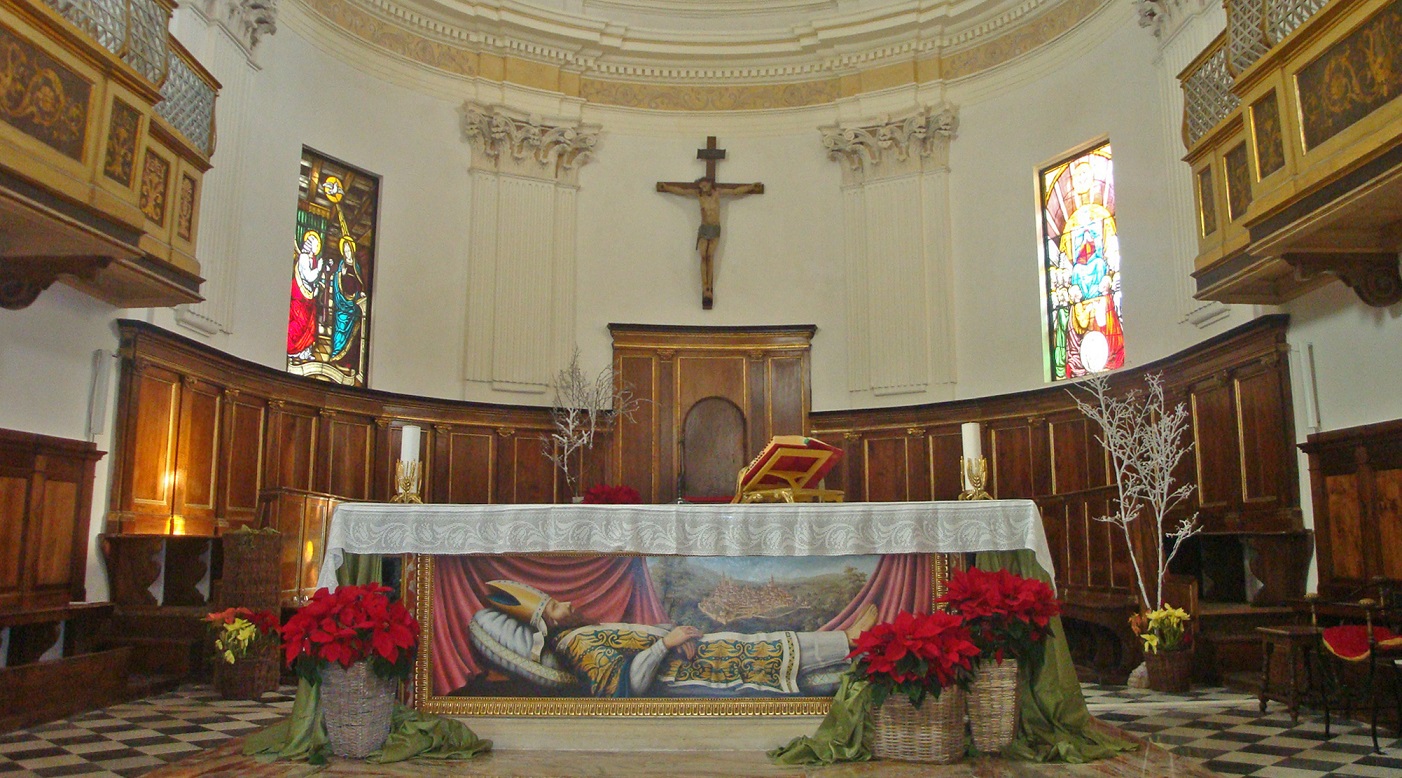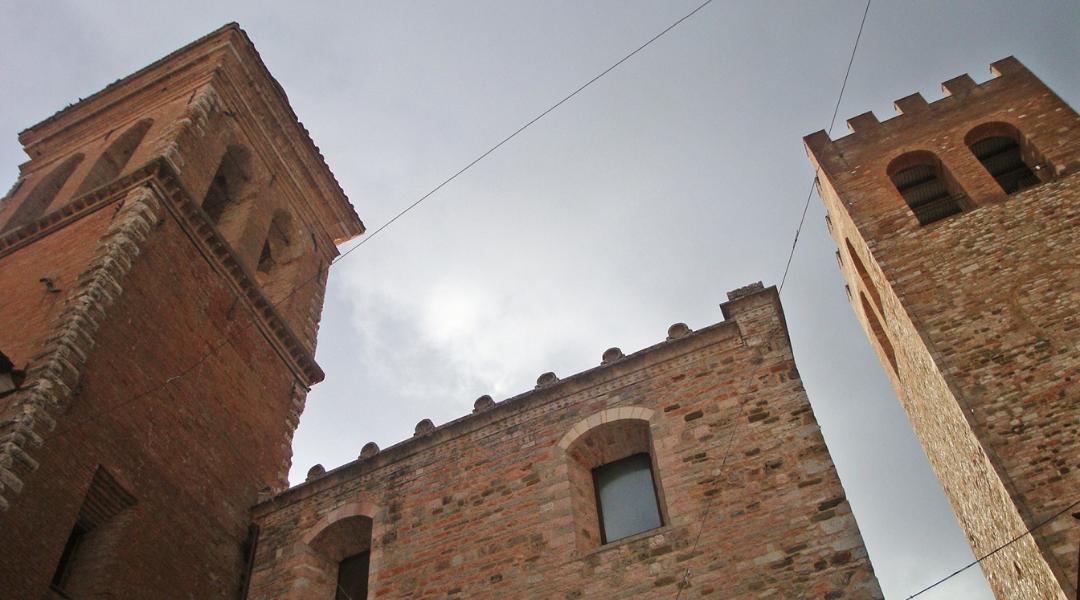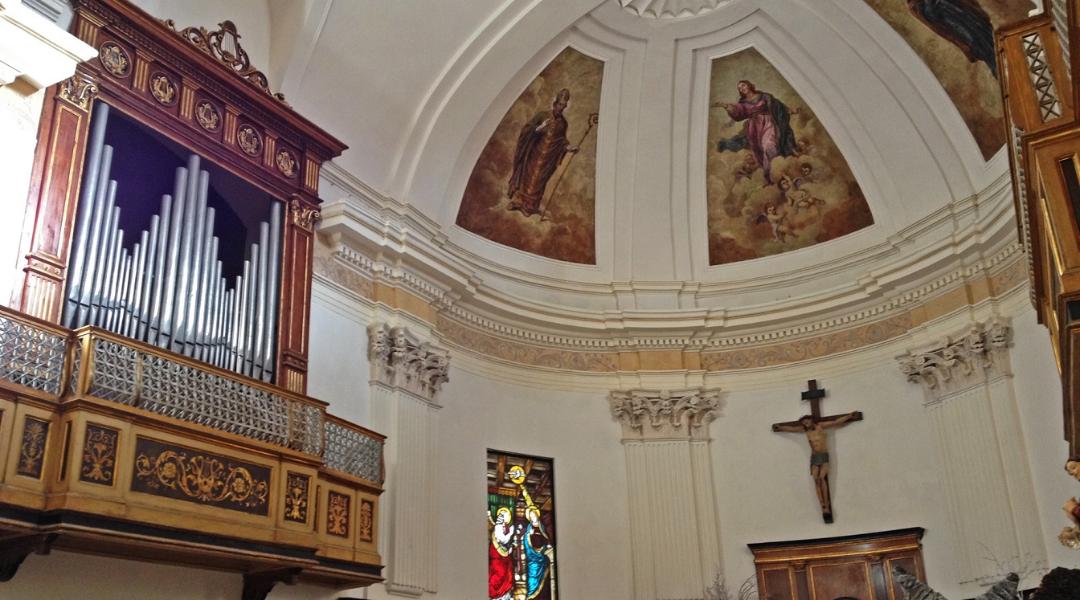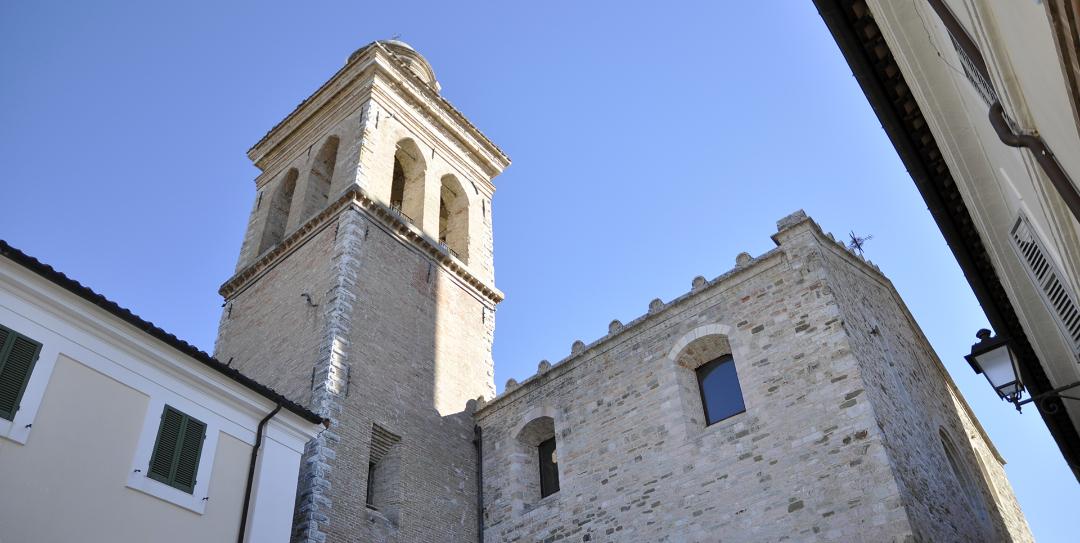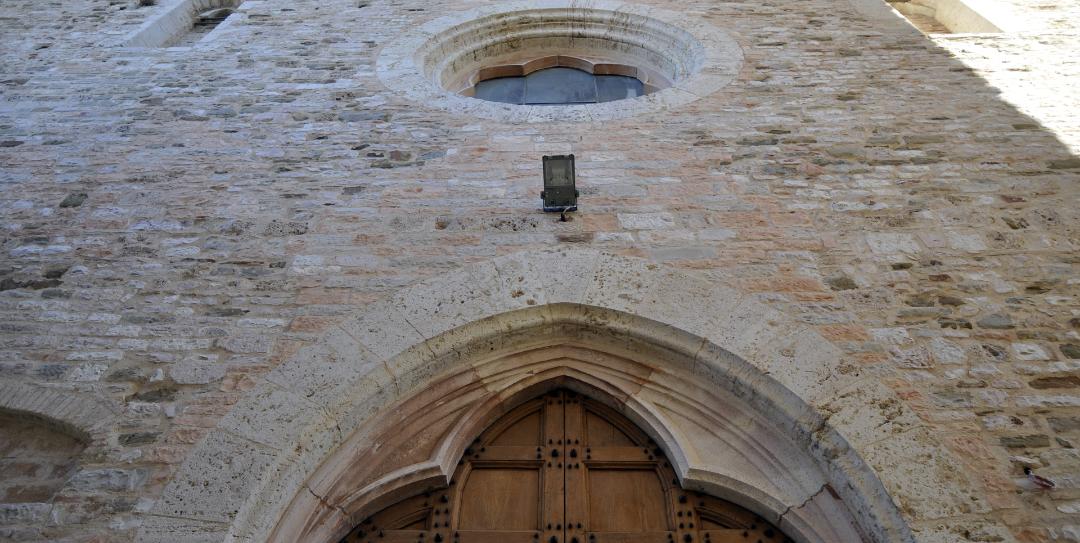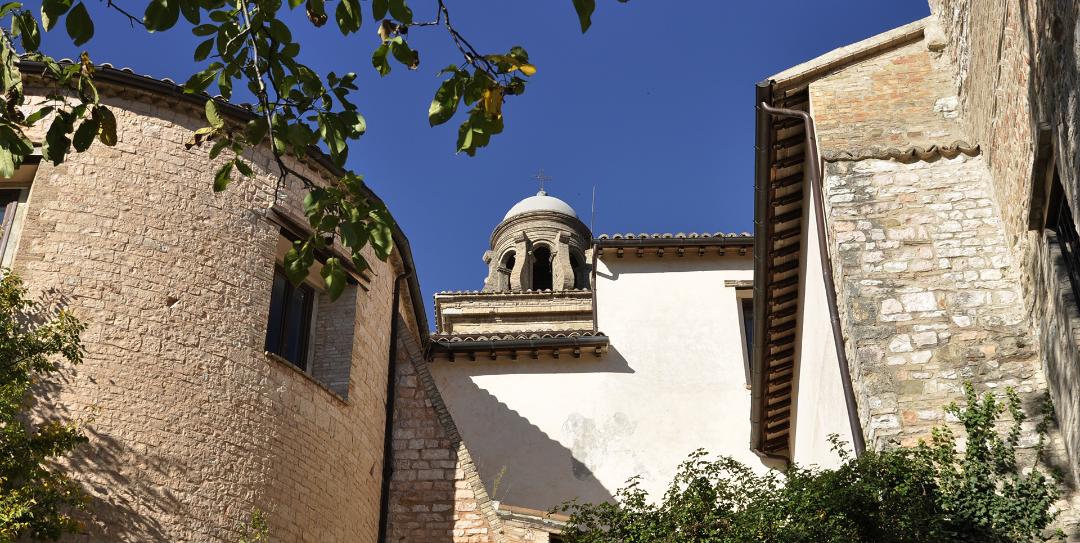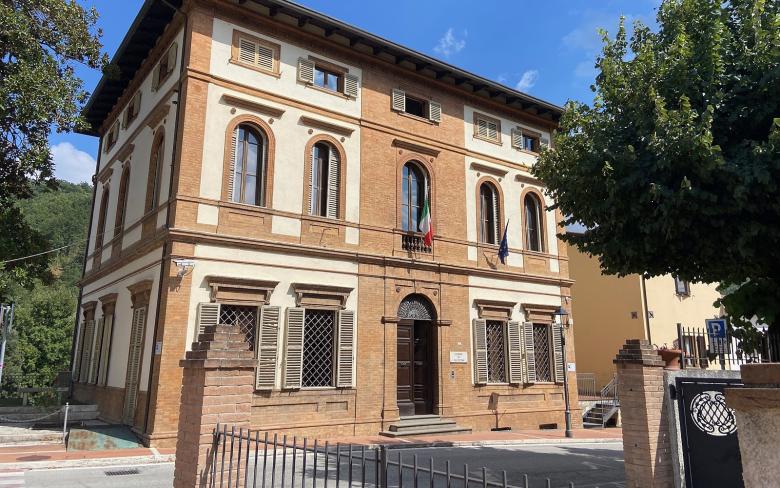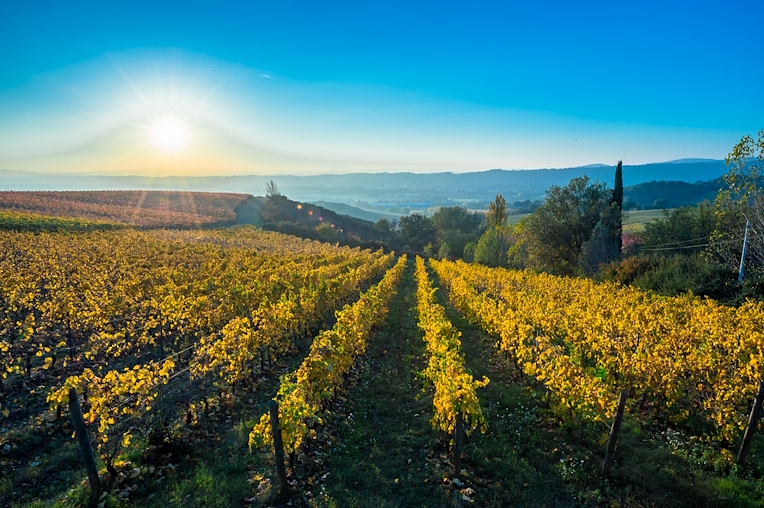III, 113). In the 5th century, when the Nocera diocese was established, the temple was transformed into a church and devoted to Mary.
One of the traces of another restoration, that took place around the 10th century, is the Romanesque portal located at the side entrance of the church, placed at the top of Via S. Rinaldo and enriched with a decoration in carved stonework of grape varieties and animals in the band of the archway. Another very probable earlier piece of this cathedral is a massive cross in stone containing a hollowed cross that is preserved in the Diocesan Museum. After the destruction of Nocera by Federico II in 1248, the church was abandoned and only in 1448 it was rebuilt on its ancient foundations.
The architecture had only one nave, with a roof of arches and girders according to the Franciscan style (the same style is currently visible in the Church of St. Francis). The stone decorations of the main façade are a modern restoration dating back to 1925 (as described by the plaque on the wall).
Entering from the secondary door (on via Rinaldo) there is a big nave with a semicircular apse. The restoration dates back to the start of the 19th century, in neoclassical style with columns, pilasters and vaults made of processed plaster.
[Source: www.nocerainumbria.it]
























